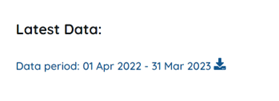Healthcare Associated Infections (HCAIs) is one of several measures we publish on our website to help people looking for a hospital or consultant doctor to diagnose or treat a health condition.
What are ‘Healthcare Associated Infections’?
Healthcare Associated Infections (HCAIs) are a wide range of infections caused by the organisms listed below.
- Clostridioides difficile
- E.coli
- Klebsiella
- MRSA
- Pseudomonas.
All NHS and private hospitals are required to report any incidents of these to UK Health Security Agency (UKHSA) and PHIN (for privately funded care only).
PHIN publishes two key measures in relation to HCAIs:
- Counting the total number of a hospital’s patients that had a HCAI during the course of a year
- Expressing this number in proportion to the amount of exposure to the risk of infection these patients experienced.
We calculate 'exposure to risk' based on the total amount of time (measured in overnight stays) that patients spent in a given hospital over the course of a year. The logic for this is that the more time patients are in hospital the more time (or risk) they have of catching or developing a HCAI.
We use the annual total number of bed days all patients spent at a given hospital as its measure of exposure. This is an industry standard way of measuring exposure for this type of measure and the rate is published as the number of HCAIs per 100,000 bed days.
How many HCAIs were there at my hospital?
Our website allows people to search for hospitals who undertake specific operations close to the where you live. The search tool is available on the PHIN homepage or top of any page.
After entering a location and operation, the website will present you with a list of hospitals that undertake this procedure sorted by those closest to the chosen location. You can visit the hospital profiles and view a section on ‘Incident reporting’.
- The total count of incidents.
If the hospital has reported any incidents, you can find out more by clicking on the ‘View latest report overview’ button.

This will then show you a range of possible incident types and how many of each there have been in the latest 12 months for which we have data. For example:

If you would like more detailed information on the type of infection and amount of data provided by the hospital, please go to the Infections datasheets in the Our Data section. You then need to click on the link to download the Excel file (see example below):

Once you’ve opened the Excel file, go to the HCAI tab.
This will allow you to view the details, including the type of provider, Independent (IND) or NHS private patient unit (NHS PPU), along with the count and rate of infections.
Why should I be interested in this information?
HCAIs pose a serious risk to patients, staff and visitors to hospitals and can cause great harm to infected patients. They can be contracted in several ways.
- As a direct result of hospital treatment, or from being in a hospital.
- As a direct result of healthcare received in the community.
- As a result of an infection being contracted outside of the hospital and brought in by patients or staff and transmitted to others.
It can be informative to know how many infections a hospital’s patients experienced in a year. However, comparing counts of infection between different hospitals is not straightforward.
Some hospitals are bigger, treat more patients and therefore are more likely to experience more infections. Therefore, when such hospitals are compared with smaller hospitals, while they might have recorded a greater number of infections their rate of infection may be greater, the same or less.
One hospital may also have a higher rate of infections compared to another because it treats frailer, elderly or seriously ill patients. PHIN’s method is currently unable to take these factors into account and therefore this needs to be borne in mind when making comparisons.
A hospital that only performs minor procedures (such as eye surgery) might expect to have fewer infections. Whereas hospitals undertaking more complex treatments (such as major bowel surgery) might have more. But if the one providing complex care applies the appropriate levels of infection control, its count or rate of infections might well be the same as the one providing eye surgery.
Because of these and other factors, these infection measures alone, published on PHIN’s website and elsewhere, can’t tell you the full story of an individual patient’s risk of getting an HCAI at a particular hospital. Therefore, this information is best used as part of the wider discussions about patient safety and care with your consultant or hospital.
Help with understanding and using our healthcare datasheets
Find out more about our data sheets, including how we protect patient data.
Go to Datasheets.
